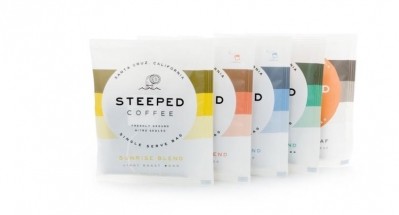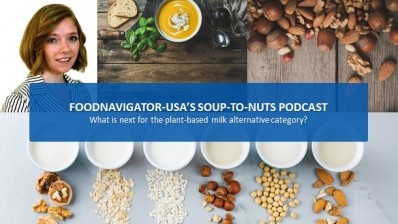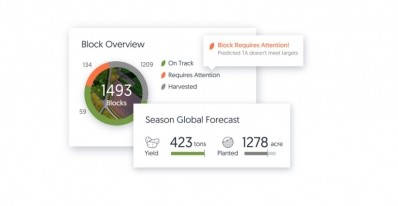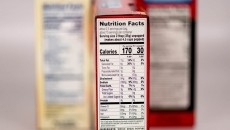Soup-To-Nuts Podcast: What will it take to create a sustainable food system to feed 10 billion people?
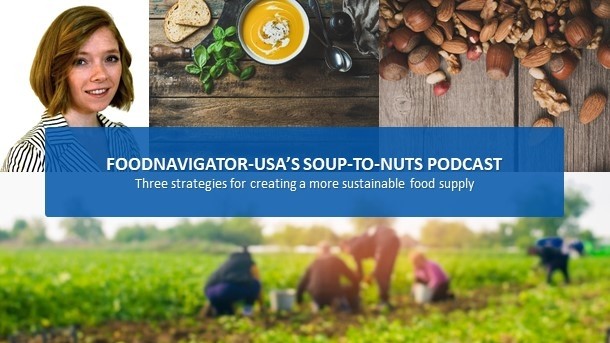
According to the recent report ‘Creating a Sustainable Food Future’ produced by the World Resources Institute, in the next 30 years the world will need to close a 56% ‘food gap’ without increasing deforestation related to the development of more farmland. In addition, the report notes that greenhouse gas emissions from agriculture and land-use change will need to be cut by two-thirds.
While this is a tall order, innovative startups in the US are already developing solutions, according to Allie Burns, who is the managing director of Village Capital, which manages the longest-running agriculture accelerator program in the US and is focused on finding early stage entrepreneurs working to solve major global problems in agriculture, education, energy, financial inclusion and health.
She explains in this episode of FoodNavigator-USA’s Soup-to-Nuts Podcast how many early stage startups are tackling sustainable agriculture by developing tangible solutions that improve the efficiency of farms, decrease food loss and waste, and offer ‘Earth-functional’ foods. She also calls upon policymakers and investors to do more to support food and agriculture innovation with an eye towards establishing a more sustainable food supply in the future.
The current path to production is not sustainable
The mounting concern about sustainable agriculture is not just hype, and the threat to the planet is very real, according to Burns. And while she acknowledges some recent changes, such as the growing popularity of plant-based foods, is helping – they don’t go far enough.
“The way that we farm, transport and consume food right now is on track to completely destabilize the planet’s eco-system, and that is for a variety of reasons, but one is there hasn’t been a lot of innovation when it comes to the way that we not only produce but how we consume food,” she said.
When looking for viable solutions, Burns acknowledges it is tempting to focus on splashy high-level ‘disruptive’ changes. But trying to compete at that level can be intimidating to a lot of innovators and entrepreneurs.
Supporting ‘Earth-functional’ foods
Burns breaks down much of the innovation and developing solutions into three major categories: so-called ‘Earth-functional’ foods, waste reduction and precision agriculture.
Turning first to Earth-functional foods, Burns explains the term refers to ingredients and products that are not only healthy for people but also for the planet. She adds these foods strongly favor plant-based options.
“Earth-functional foods essentially means foods that are offering an alternative to meat, offering lower carbon footprint or incorporating recycled and upcycled ingredients,” she said.
For example, she noted a graduate from Village Capital’s incubator Pulp Pantry, which uses by-product from juice to make cereal and other pantry items. Kuli Kuli Foods, which makes products using the protein-rich moringa plant, is another example, she said.
Reducing waste and loss
While producing Earth-functional foods is a good start to stabilizing the planet and meeting the population’s nutrition needs, it won’t have as large of an impact if those ingredients are shipped around the world in a way that generates a large carbon footprint.
With this in mind, Burns said that the second major strategy that startups are pursuing to create a more sustainable food system is through supply chain innovations that reduce food waste and loss.
“About a third of food produced is lost or spoiled before it reaches consumers, and that is including the food that is shipped long distances before it is thrown out,” she said.
But, she added, “there are some really interesting innovations happening,” such as Cambridge Crop, which created an edible biomaterial coating from silk that shields against spoilage and can extend the shelf life of produce up to 50% without affecting the taste profile.
Other companies are tackling sustainability by simplifying the supply chain, such as Vega Coffee, which teaches coffee farmers how to roast their own beans to earn more money and cut out a middle man.
And finally, some companies are reducing waste by redirecting food that would be thrown away to other uses. One company that does this is Goodr, which coordinates the donation of untouched food that would have been catered but wasn’t needed to hungry populations.
Precision ag helps farms operate more efficiently
Several startups are going all the way back to the farm to help improve the sustainability of the food supply by looking for ways to produce ingredients more efficiently – for example, finding ways to produce higher yields with less water or inputs, and creating solutions to stop erosion and pollution.
As Burns explains, many of these solutions use the same technologies that are fueling other sectors, such as artificial intelligence, robotic devices and tools that connect with the Internet to quickly process data and identify anomalies in water or pesticide use.
A graduate of Village Capital’s incubator program, Wexus Technologies, is an example of a company that allows farmers to track their water and energy usage with connected underground sensors with a goal towards more efficient use of resources.
Another company, iUNU, uses artificial intelligence to alert greenhouse growers of anomalies and changes in yield.
Legislators need to step up to the plate
As startups continue to do their part to improve the sustainability of the food, Burns and Village Capital are calling on legislators and investors to make the solutions offered by these companies more accessible to farmers and manufacturers.
For example, many of the precision agriculture tools rely on broadband, but four out of ten rural Americans still lack access to basic broadband services – a problem that a Farm Bill working group was tasked with addressing but which continues to persist.
In addition to providing access to broadband, Burns says legislators should do more to subsidize the cost of implementing these new tools – especially on small farms that don’t make the margins needed to invest in advanced technology.
Burns also argues that venture capitalists also can help improve the sustainability of the food supply by doing a better job of investing in companies in the heartland that are familiar with the challenges faced by rural and farming communities.
“Seventy-five to 80% of venture capital investments is going to three states: New York, Massachusetts and California,” and yet there are entrepreneurs with breakthrough innovations in cities throughout the Midwest where agriculture has a stronghold, she said.
As Burns makes clear, there is no silver bullet to creating a more sustainable food supply, but as Burns notes there are lots of viable solutions – many of which have significant marketing potential that could make investments worth the government’s and venture capitalists’ time.
